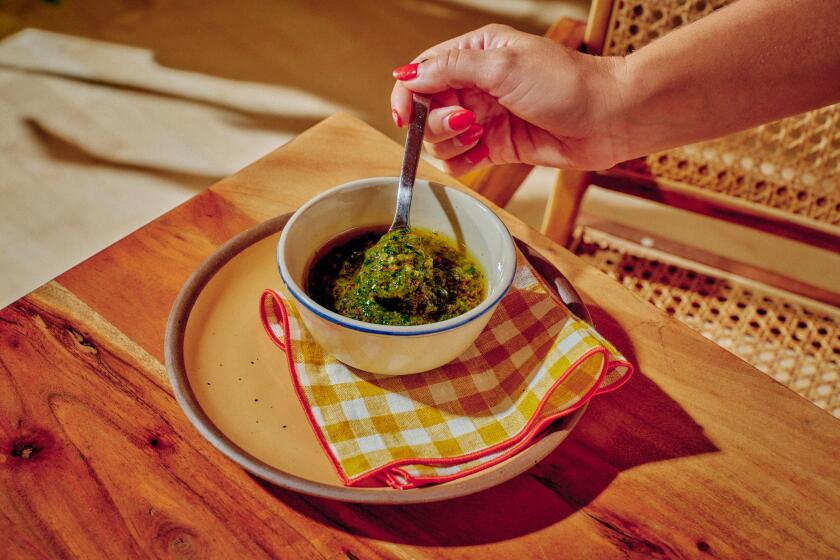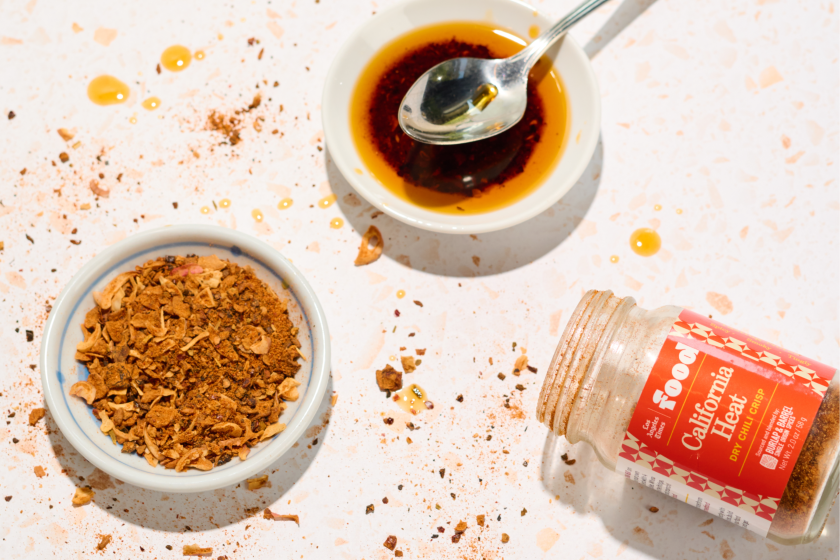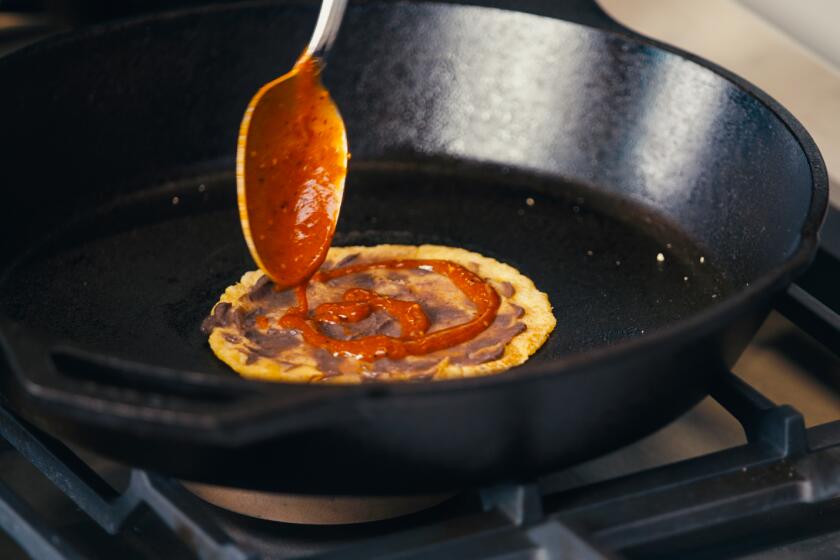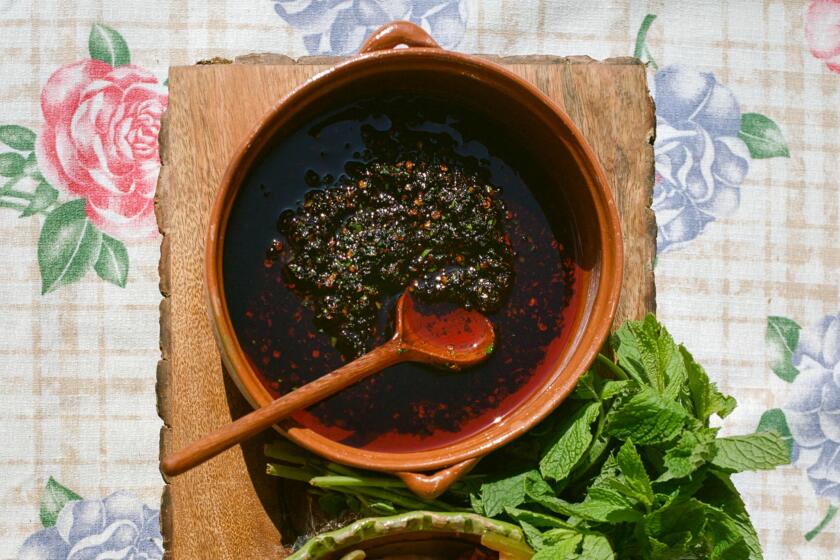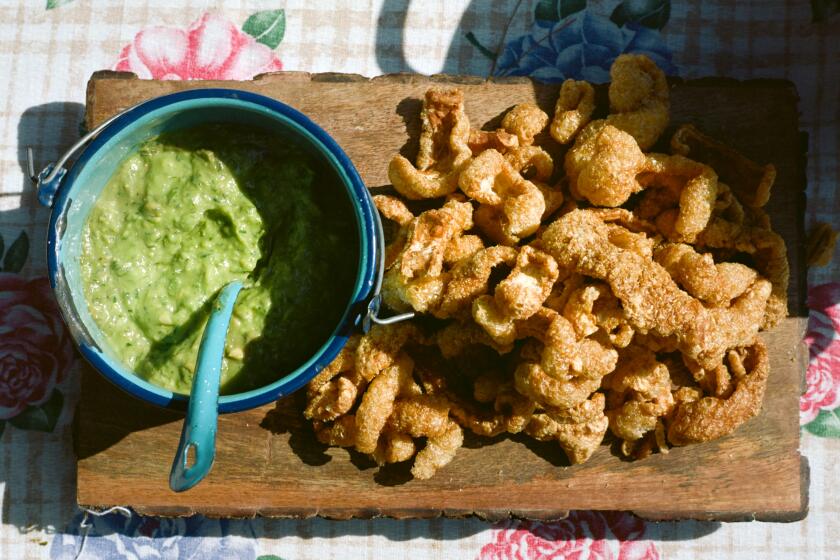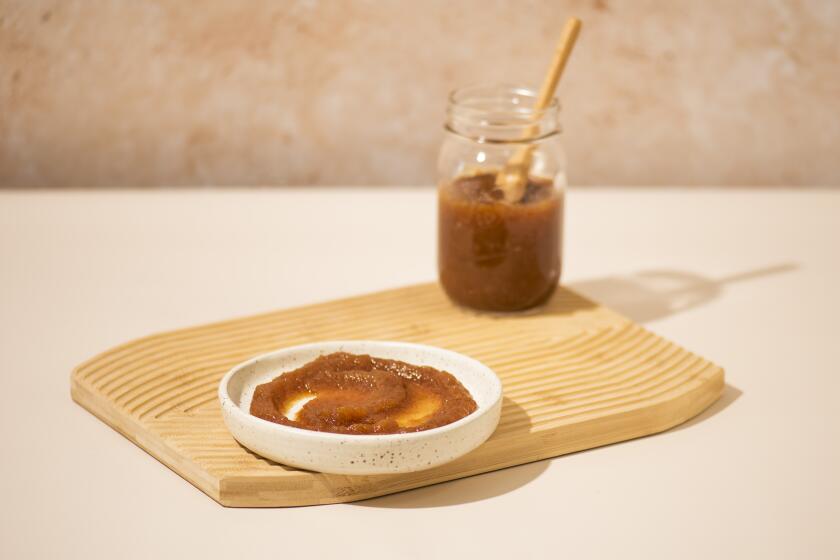Immersion Blender Mayonnaise
Eating homemade mayonnaise is the kind of luxurious pleasure -- like eating chocolate in the bath -- that shouldn’t require apology. Rich yet subtle in flavor, with a pillowy texture, homemade mayo is nothing like the pale, cloying stuff you get out of a jar.
It dresses up too. Spiked with chiles or shot with saffron, mayonnaise is the perfect secret weapon for a tapas party.
Mayonnaise is a notoriously breakable emulsion, or combination of two liquids (such as oil and water) that can’t be mixed but can be held together in a kind of suspension. But it’s easy to make if you know some tricks -- and the payoffs are big.
Purists make mayonnaise by hand, but successful recipes for blender mayonnaise have been around for years. Now, with the wide availability of good immersion or wand blenders, it’s a great time to update the technique.
Back in the day of 19th century French chef (and sauce expert) Antonin Careme, mayonnaise was made by stirring vinegar and egg yolks with small increments of oil -- relentlessly, with a wooden spoon, for upward of 15 minutes -- until the sauce slowly came together.
The oil droplets bond with the water-based liquids -- traditionally just the yolks and vinegar -- and as the droplets become smaller and smaller, the mixture combines, or emulsifies, until the mayonnaise is thick, custardy and as yellow as butter.
When you make mayo in a blender, the principle is the same -- oil is slowly added to the yolk-vinegar mixture -- but the whirring blades make the process far easier.
Making mayonnaise using an immersion blender may be the coolest technique yet -- at least until they figure out how to make it in a Pacojet. Or a particle accelerator.
With an immersion blender, the process is even faster and you can see the unfolding chemistry, like a sudden, beautiful lab experiment.
Herve This, author and co-founder of the approach to cooking often called molecular gastronomy, loves to play with mayonnaise. “There is a wonderful experiment that you can make easily,” This wrote in a recent e-mail.
“Make a mayonnaise with a fork and a lot of vinegar [and egg yolk]. The result is not very firm, and quite acidic. Then, in the middle of the bowl, put a plunging mixer and [turn] it on for some seconds. Immediately you get, under the place where you mixed, a very firm sauce, more white, less acidic. Under the microscope you see that the droplet size was divided by 10 to 100!”
You don’t have to be a molecular gastronomist to be wowed.
To make immersion blender mayo, first allow your ingredients to come to room temperature (this is crucial). Place them in the beaker that came with the blender or in a liquid measuring cup or jar with tall, narrow sides.
Place the blender wand in the container and hold it upright against the bottom. Then slowly pour in a cup of canola or other neutral oil (don’t use olive oil at this stage; it’s expensive, more difficult to emulsify and often turns bitter when mixed in a blender), allowing the oil to settle on top.
When the container is mostly cloud-filled, plunge the blender to incorporate the remainder of the oil.
At this point you have a very stable emulsion, and you can continue to add oil -- you could theoretically add quite a bit more, according to Harold McGee, another mayonnaise-happy chemist, as long as the ratio of oil to water-based ingredients is 3 to 1 by volume -- to the sauce without it breaking.
If, however, the sauce does break, you can start over -- or reemulsify the sauce by adding the broken mixture, very slowly, into a new egg yolk.
Once the ingredients have emulsified, I like to gently whisk in good-quality olive oil and fresh lemon juice. The floral notes of the olive oil and the tart bite of lemon enhance the flavor and smooth out the texture, making it creamier. (Lemon juice added at the beginning instead of water makes an oddly rougher sauce, less pale and velvety, more likely to separate; the water makes the sauce lighter and smoother.)
The sauce is now a classic basic mayonnaise, ready for spreading on sandwiches, adding to salads or dressings, spooning over fish before roasting, or serving in a bowl alongside a basket of hand-cut French fries.
Mayonnaise is also a fantastic base for any number of dipping sauces. Stir in fresh minced cilantro or a puree of roasted piquillo peppers, and watch as the pale yellow sauce becomes confetti-flecked with emerald or deepens into rich red hues.
Place the yolks, vinegar, 1 tablespoon water, salt and pepper in a 2-cup measuring cup or a tall beaker used for immersion blenders. Stand the immersion blender in the beaker or measuring cup, then slowly pour in the canola oil so that it settles on top of the other ingredients. (If you’ve heated the yolks first, allow them, along with the vinegar, salt and pepper, to settle for about 5 minutes after adding the oil so that the oil rises to the top.)
With the blender held against the bottom of the glass, pulse until the mixture begins to emulsify, almost immediately. Continue to pulse, turning the blender a bit, but keeping it pressed against the bottom of the container. Keep pulsing until most of the mayonnaise is emulsified, less than 1 minute, then slowly plunge the blender a bit to mix thoroughly. Spoon the mayonnaise into a medium bowl, then whisk in the olive oil and lemon juice until very well combined. Serve immediately or store tightly covered in the refrigerator for up to 2 days.
To make using a food processor:
In the bowl of a food processor, pulse the yolks, vinegar, 1 tablespoon water, salt and pepper until well combined.
Add the canola oil in a very, very slow stream until the mayonnaise thickens and all of the oil is incorporated. Spoon the mayonnaise into a medium bowl and whisk in the olive oil and lemon juice until very well combined. Serve immediately or store tightly covered in the refrigerator for up to 2 days.
Piquillo pepper mayonnaise: Follow the basic mayonnaise recipe, substituting sherry vinegar for the white wine vinegar. Add one-fourth cup pureed piquillo peppers and a pinch of cayenne to the mayonnaise.
Saffron mayonnaise: Soak a pinch of saffron threads in 1 tablespoon of hot water for 15 minutes, then add the water and threads to the egg-yolk base in place of the plain water. Continue with the recipe for basic mayonnaise.
Tarragon-mustard mayonnaise: Add one-fourth cup finely minced fresh tarragon and one-fourth cup stone-ground mustard to the basic mayonnaise recipe.
Cilantro-lime mayonnaise: Make the basic mayonnaise, replacing the lemon juice with lime juice and adding one-fourth cup finely minced fresh cilantro to the sauce.
Cumin-caraway mayonnaise: Toast 1 tablespoon each of cumin seeds and caraway seeds in a small saucepan, then grind in a spice grinder. Add to the basic mayonnaise.
Garlic mayonnaise (aioli): Using a mortar and pestle, crush 4 garlic cloves with one-fourth teaspoon kosher salt, then add to the egg-yolk mixture. Omit the salt, and continue with the rest of the recipe for basic mayonnaise.
Mustard-caper mayonnaise: To a recipe of basic mayonnaise, add 3 tablespoons Dijon mustard, 2 tablespoons minced capers, 1 mashed anchovy and 1 tablespoon each minced fresh chervil, tarragon and parsley.
Wasabi mayonnaise: To a recipe of basic mayonnaise, add 1 tablespoon fresh or prepared wasabi (Japanese horseradish).
Get our Cooking newsletter.
Your roundup of inspiring recipes and kitchen tricks.
You may occasionally receive promotional content from the Los Angeles Times.











